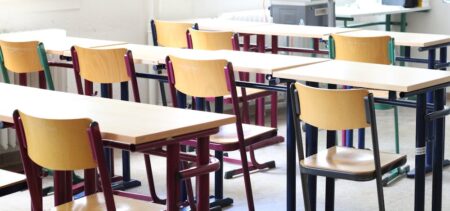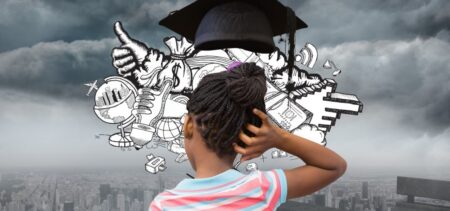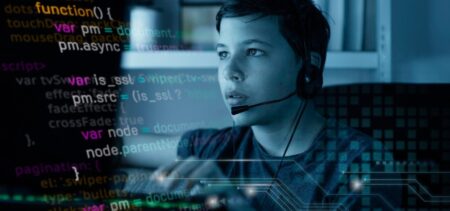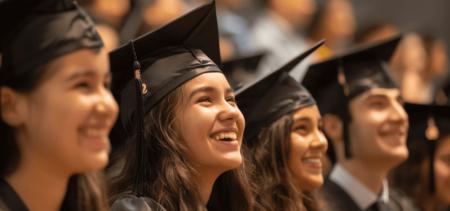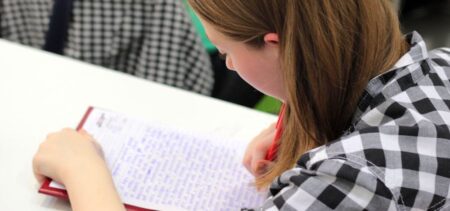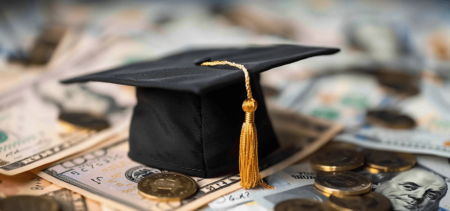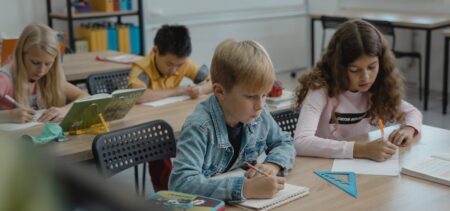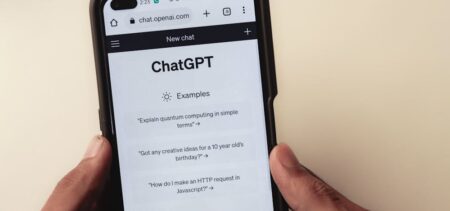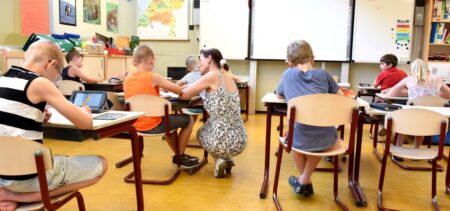Teacher supply and demand are multipronged issues that come up at the beginning of every school year. In 2016, thousands of positions were vacant and yet to be filled in what was rightfully called a teacher shortage crisis – and this was no premiere.
The source we quoted above goes even deeper into the matter. US News mentions that this is appears to be the first major outage since the 1990s. The situation is critical, with an expectancy of an even increased shortage: “by 2018, the annual shortfall could grow to 112,000 teachers.”
The teaching conditions in the United States are at a low. Something needs to be done to attract a “stronger, more sustainable teaching pool”. Nevertheless, the long-term projection on education and its professionals might shift toward another paradigm, with the help of education technology.
Artificial Intelligence might help with the teacher shortage
This possibility is taken into consideration with the raise of AI software that we are experiencing nowadays. Automation has permeated into the business environment and continuously evolves towards taking over new functions. It saves time and money as well. However, can we efficiently automate education activities?
TeachThought believes that custom-designed software could perform at least some tasks, standing in for teachers. Human grading, for example, is a task that takes a lot of the teachers’ valuable time. We especially have in mind multiple choice and fill-in-the-blanks tests. Replacing human grading does not apply to essay grading, of course. Yet it would be useful for teachers to shorten the time spent on robotic checks. Getting help from AI would consequently lead to teachers having more time for grading essays or projects.
Besides grading (and other similar activities), AI software could offer additional support for students by acting like a tutor. Basic levels in various subjects can (theoretically) be better mastered by pupils with the help of AI during their study hours. We have all heard of, or even tried, student-friendly applications or programs that enhance mathematics or grammar skills. Think about these at a more personalized level. Thus, one might easily visualize how the work of teachers could be yet again made more easy by digital helpers.
Remote learning and AI – nuances
In addition to saving time for the teachers and taking over support for personalized tasks given to students, AI could also save space by allowing remote interactions. Students can learn anywhere, anytime.
Of course, there are nuances – higher education is best suited for remote learning, as we mentioned in a previous article. Younger students still need to be part of a physical community in order to better learn, if this option is available. Only special circumstances motivate remote learning, and the debate on its effects for young pupils has revealed various counterarguments. In other words, until students gain a level of learning autonomy, it is not recommended to let their development in the digital hands of AI teachers.
What is the balanced prediction in teaching?
There are enthusiasts on both sides. Some argue the teaching activities should be exclusively human. Meanwhile, others praise the perspective of robotic professors. The more balanced prediction lies in-between. Forbes depicted this educational dilemma in an October 2016 article. They are playing out the human vs. machine scenario. They also enumerated the obvious benefits of AI in education, as such:
- automation of basic, repetitive tasks;
- personalized educational software for each student;
- remote support for students from AI software;
- enhanced teaching experienced facilitated by digital elements;
- valuable feedback made possible by computer systems.
In conclusion, the right balance would benefit the educational process.
However, these scenarios are a bit far fetched, in the sense that for the moment efficient AI software is expensive. One of education’s problems would be precisely the lack of sufficient funding. When there are not enough money to prepare teachers or to pay them in a motivational way, how would the educational system find the resources to invest in digital technologies?
Sponsored programs are on the roll even as we speak. Yet from there to providing the necessary technology to all schools there is a considerable gap. State funding would have to fill this gap. That is precisely why various future projections are taken into consideration.
What do teachers want when it comes to the teacher shortage issue?
As a British article’s headlines announce, is is better to also “ask a teacher” when concerned about what goes wrong in the educational system. In their particular case, the teachers expressed their dissatisfaction with the way parents perceive and treat them. Parents, they say, treat them like enemies and fight them over what they consider to be best for their children. It is a matter of statute and respect, which they feel it is lacking more and more. This, in turn, makes all work environment and financial issues even more acute.
A WalletHub report from September 2016 lists the best and worst states to be a teacher in. They considered salary characteristics, teacher demand, enrollment growth in the Job Opportunity and Competition Section. They counted as well annual evaluations, spending per student or average commute time in the Academic and Work Environment Section. With New Jersey leading the top as the best scoring state to be a teacher in, the report sheds some extra light into what counts as a plus from a teacher’s point of view.
The respect issue is detailed by another source that covers a National Teacher’s Day local appeal for lawmakers to “restore respect” for their profession. As Todd Warren, Todd Warren, an elementary school Spanish teacher from Greensboro puts it, “A lot of society’s problems are being left at the doorstep of the school, and as teachers, we’re stepping up to bear that burden”.
Teachers as mentors and equilibrium providers
Perhaps the above case is a particular one, but it is nevertheless true that society and its disruptive factors put a lot of pressure on the inside school activities. Higher demands, profitability requirements and a lot of societal issues that did not receive the proper meeting inside the educational activities or curriculum all affect the teaching process in a negative way.
In a more and more segmented world, schools should be envisaged more like shelters that provide a safe bay for students, as environments that favor study and focus, and less like mirrors of all the turmoil that goes on in society. As the people whose work consists of keeping these environments balanced and calm, teachers are indeed caught up between two worlds and resent all the pressure with little if none rewards for themselves.
It might be possible for teachers to progress towards a different role in time. With monotonous activities taken care of by AI, they could use the extra time for becoming true mentors. Education has to accommodate too much information nowadays, a thing that has transformed teachers into overworked, less inspired employees. Technology just might give them back their right to perform teaching as an art, again.


